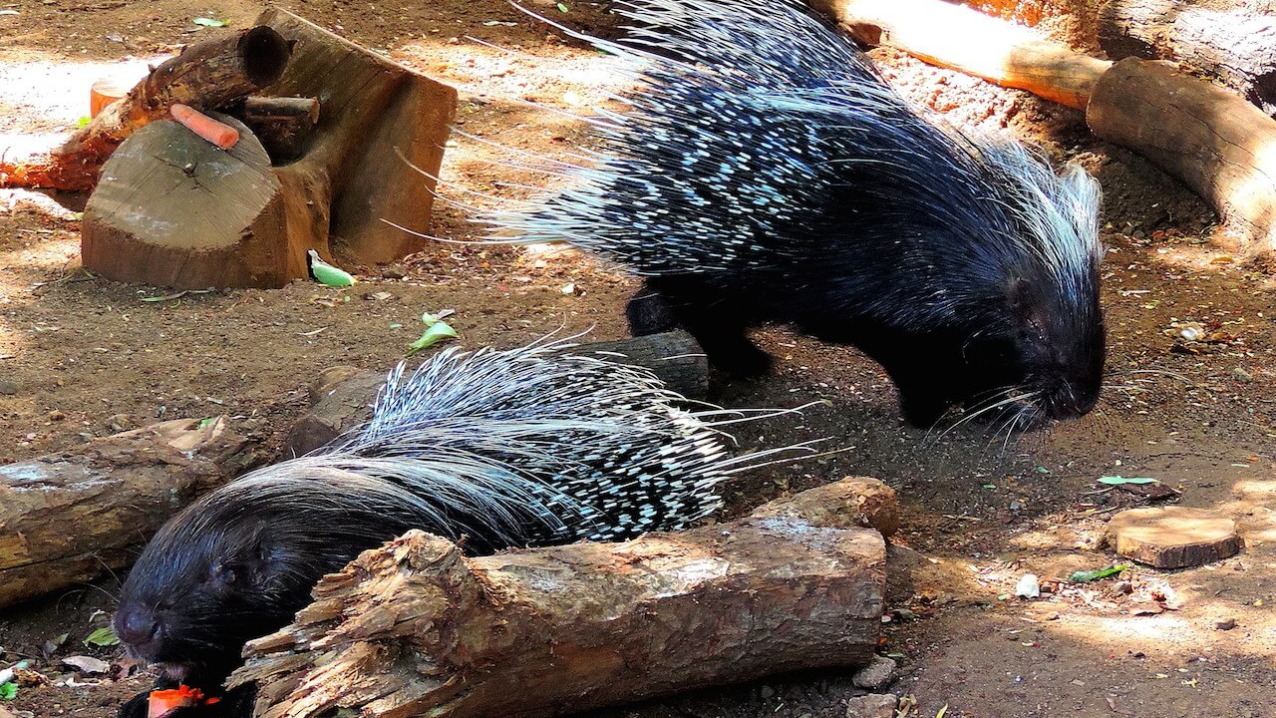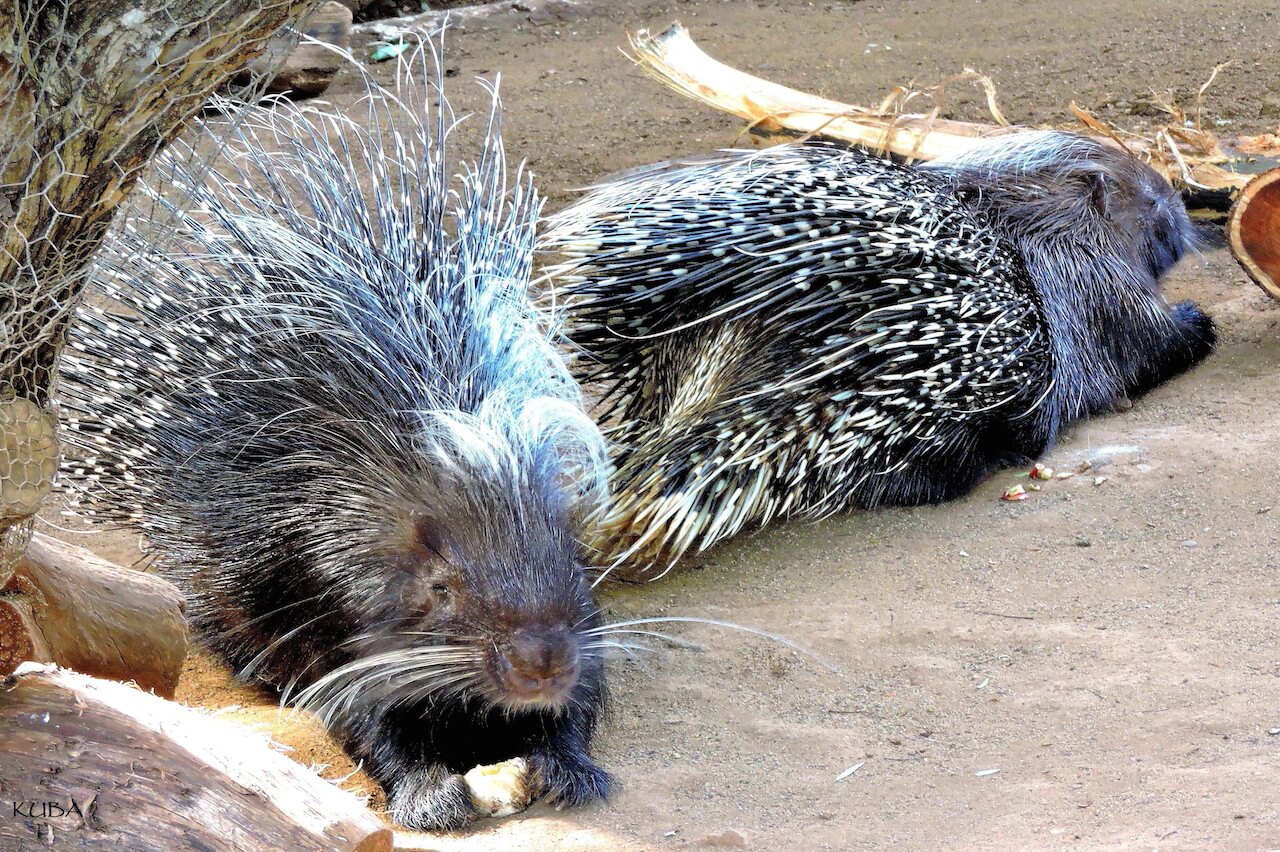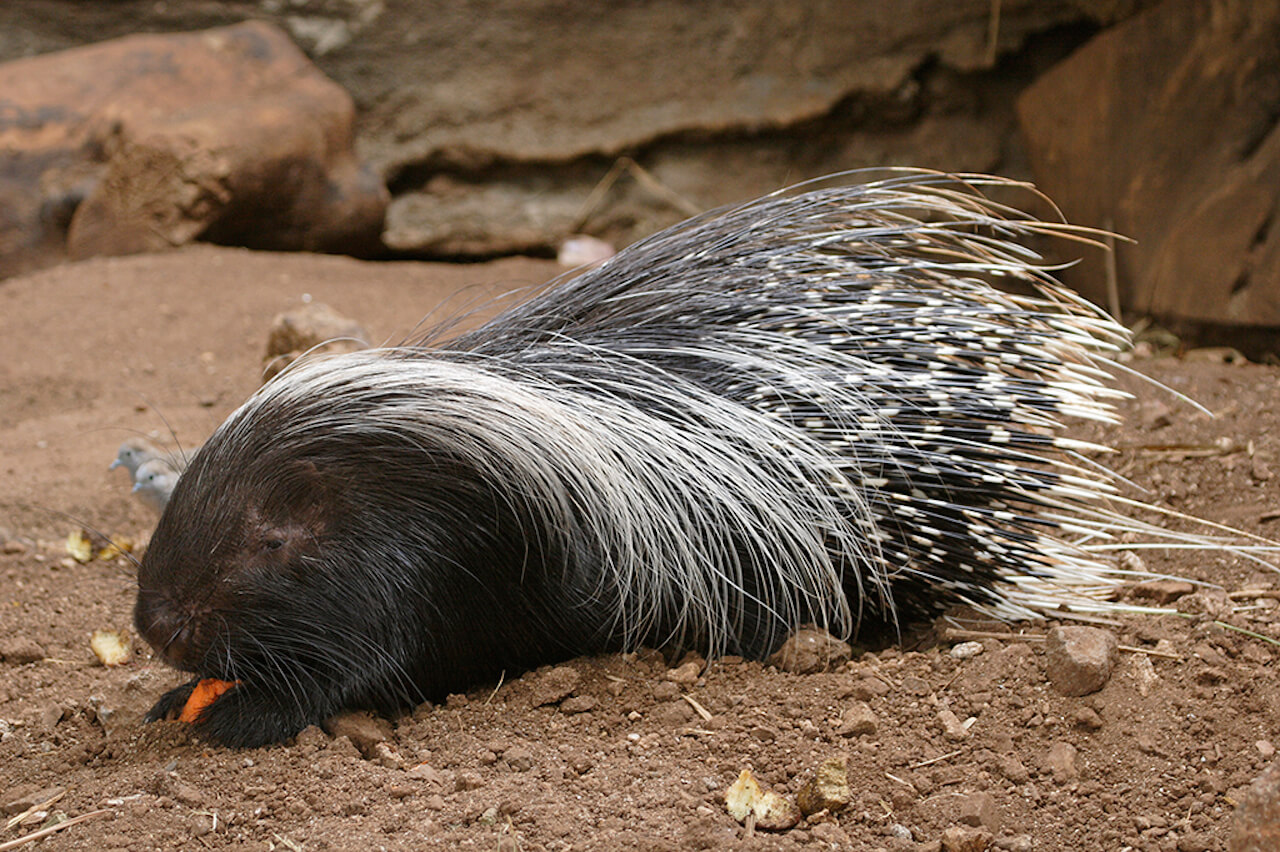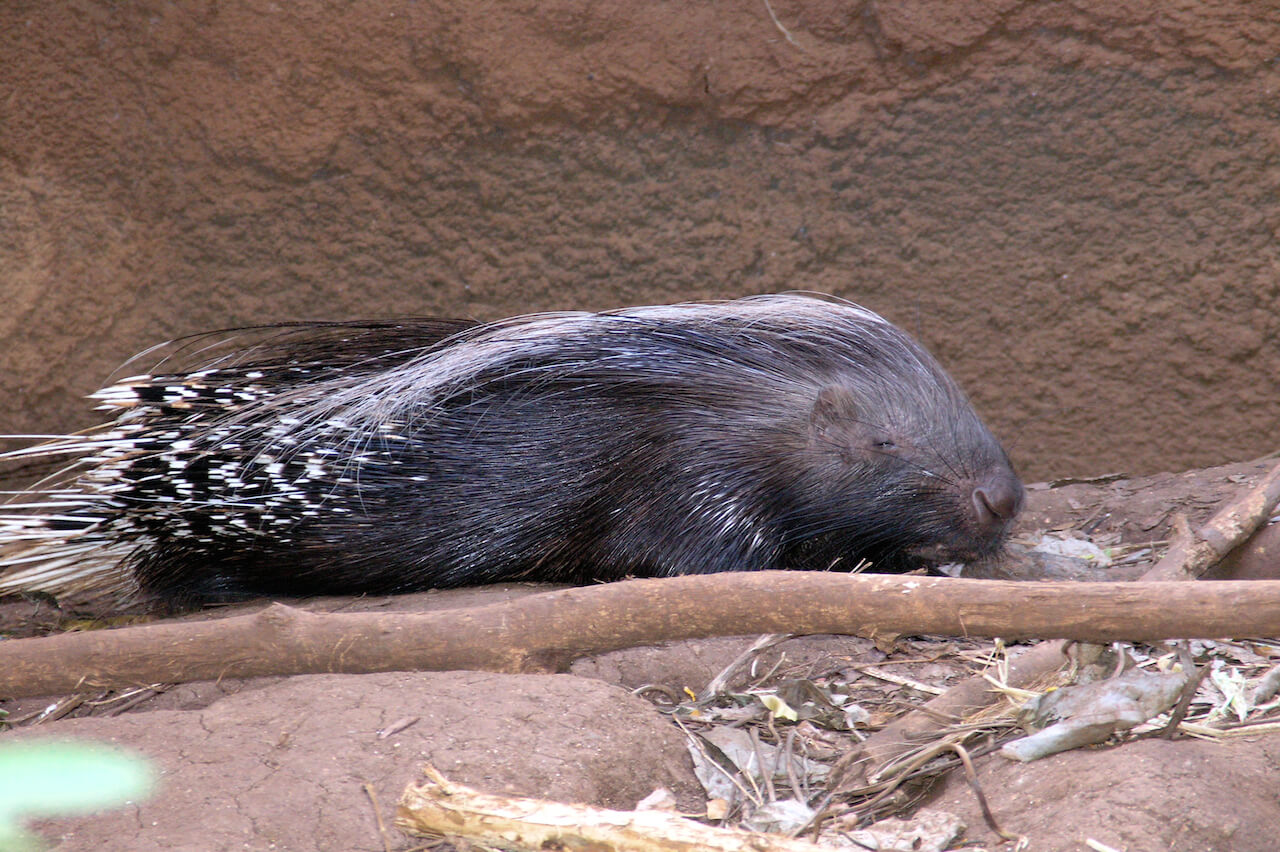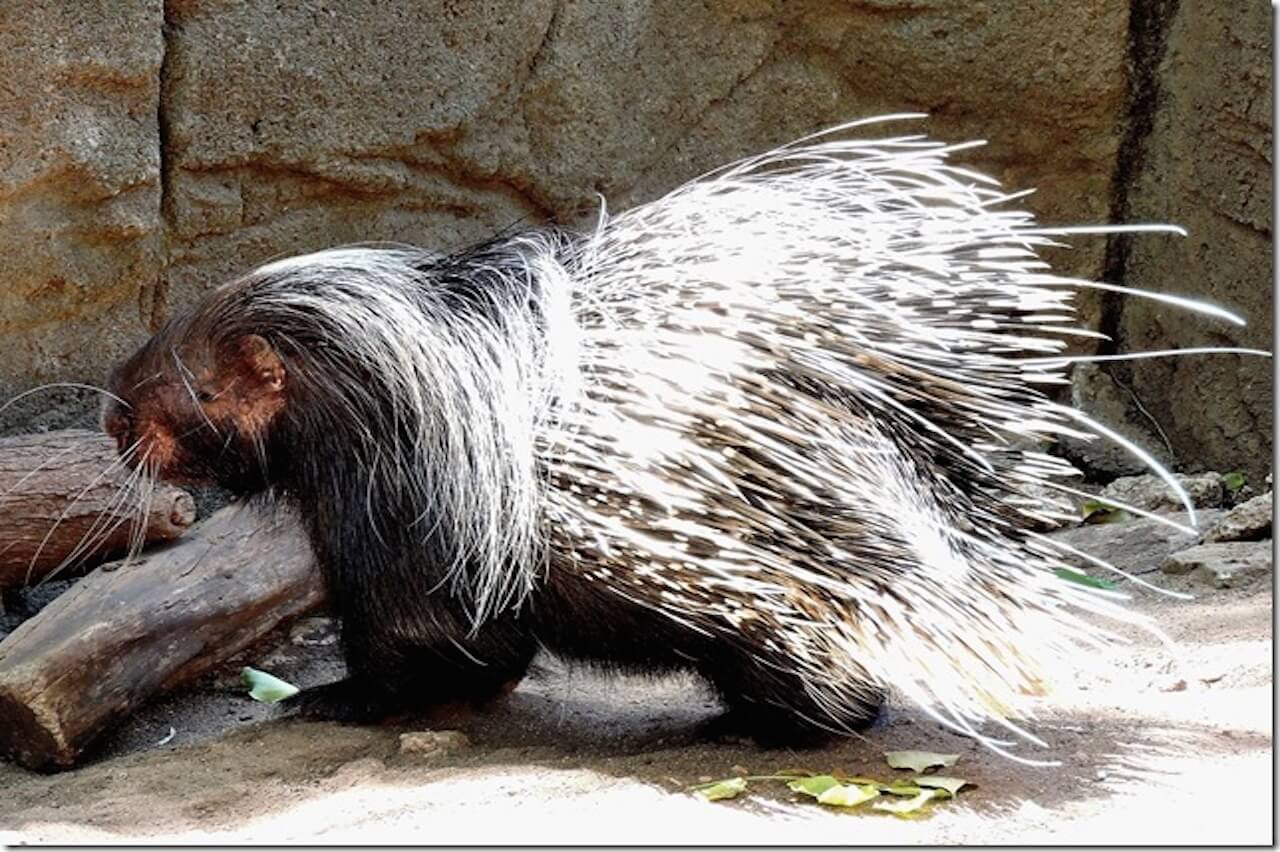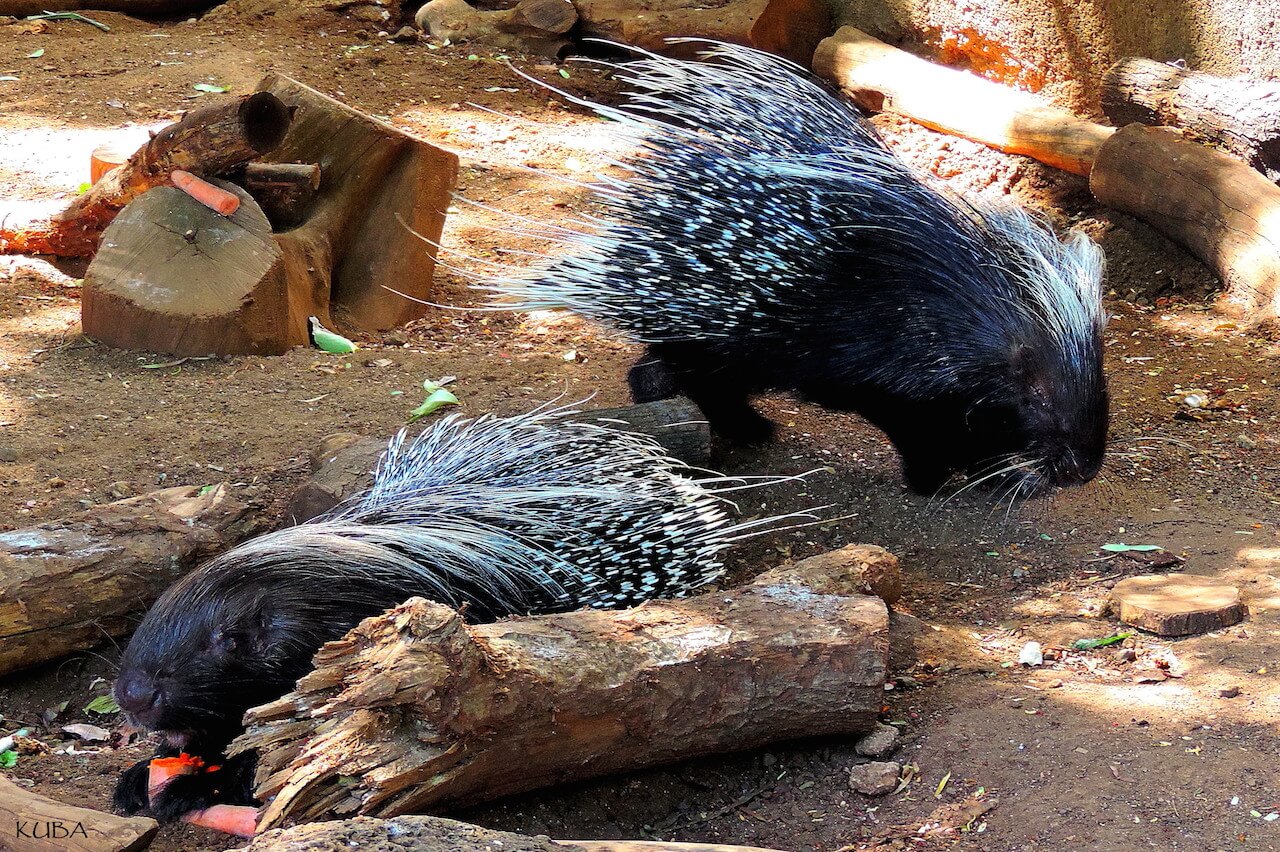hystrix cristata
Crested Porcupine
About Me
Scientific Name: Hystrix cristata
Description
The North African crested porcupine is the largest porcupine on earth. This rodent is 25 – 29 inches long (63-73 cm) and weighs about 18 – 51 pounds (8-23 kg). There are black and white quills on the neck and back. The tips of the quills on the tail are narrow and hollow. These circular quills can range up to 20 inches in length.
Fun Facts
- They are nocturnal and active during the night and are fairly social; sometimes traveling in two’s or three’s.
- When threatened or aggressive, crested porcupines stamp their feet, growl and grunt.
- Kingdom: Animalia
- Phylum: Chordata
- Class: Mammalia
- Order: Rodentia
The North African crested porcupine is the largest porcupine on earth. This rodent is 25 – 29 inches long (63-73 cm) and weighs about 18 – 51 pounds (8-23 kg).
There are black and white quills on the neck and back. The tips of the quills on the tail are narrow and hollow. These circular quills can range up to 20 inches in length. They make a rattling sound when the crested porcupine feels threatened. The underside of the porcupine is covered with rough, dark brown or black bristles. It is called a crested porcupine because the back quills can be erected into a crest. The crest starts from the top of the head and extends down to the shoulders.
The forefoot has four developed claw digits. The eyes and ears are small, compared to the size of the porcupine’s face. Both the male and female porcupines look similar. The North African crested porcupine has a short body with thick legs. The quills are very sharp and they are not firmly attached to the skin. The quills are mixed together with different sizes of spines. The spines may be as long as 21 inches. Porcupines cannot shoot their quills at predators.
The North African crested porcupine is nocturnal. They are very adaptable and can be found in forests, on plantations, in rocky or mountainous areas as well as in deserts. These porcupines find shelter in caves, rock crevices, holes or burrows that they might have dug. They may also find shelter in abandoned aardvark holes, which they may change to suit their own needs. The crested porcupines does not climb or jump.
Some North African crested porcupines may share a burrow as a family, but females may make or use a separate den for reproduction. Females usually look for food on their own. They are nocturnal and active during the night and are fairly social; sometimes traveling in two’s or three’s. Some dens may be very long and will often be scattered with bones that they may have gnawed on. When threatened or aggressive, crested porcupines stamp their feet, growl and grunt. they will also shake their quills to make a rattling sound or turn its back and charge backwards toward the intruder. The quills will often cause a deep infected wound that may prove fatal.
The North African crested porcupine are herbivores. It eats bark, roots, fruits, berries and insects. They gnaw on the bones to sharpen their incisor teeth and to obtain calcium at the same time. In the zoo, crested porcupines may be fed yams, apples and spinach. In rural areas, they may eat cultivated crops, such as groundnuts, potatoes, pumpkins and melons. Crested porcupines may travel up to 9 miles (15 km) per night. While eating, crested porcupines hold their food with their front teeth and against the ground. The incisors are sharp and chisel like. They like to eat the soft layers of bark, branches and roots of trees.
Crested porcupines, because they are nocturnal, mate during the night close to the burrow or even inside it.
Crested porcupines produce one to two litters (of one to 3 young) per year, depending on whether they live in the wild or in captivity. Their gestation period is 107-112 days with young being born during the wet season.. At birth, porcupines weighs only 3% of the mother’s weight. When born, the young’s quills are white and soft, although they start to become hard within hours. Their eyes are open and incisors are already crowning shortly after birth.
They leave the nest or den when their quills or spines are hard which is in about a week. They start to eat firm food when they are two to three weeks old. The whites on the porcupine’s back start to fade away or diminish after about four weeks. Within a group of porcupines, all protect the young. Females are not sexually mature until they are 9-16 months old and males do not reach sexual maturity until they are 8-18 months old.
Nowak, Ronald M. Walkers Mammals of the World. John Hopkins University Press, Baltimore 1991
National Audubon Society Field Guide to African Wildlife, 1995.
McPhee, M. Hystrix cristata http://animaldiversity.ummz.umich.edu/accounts/hystrix/h._cristata$narrative.html
Other Mammals
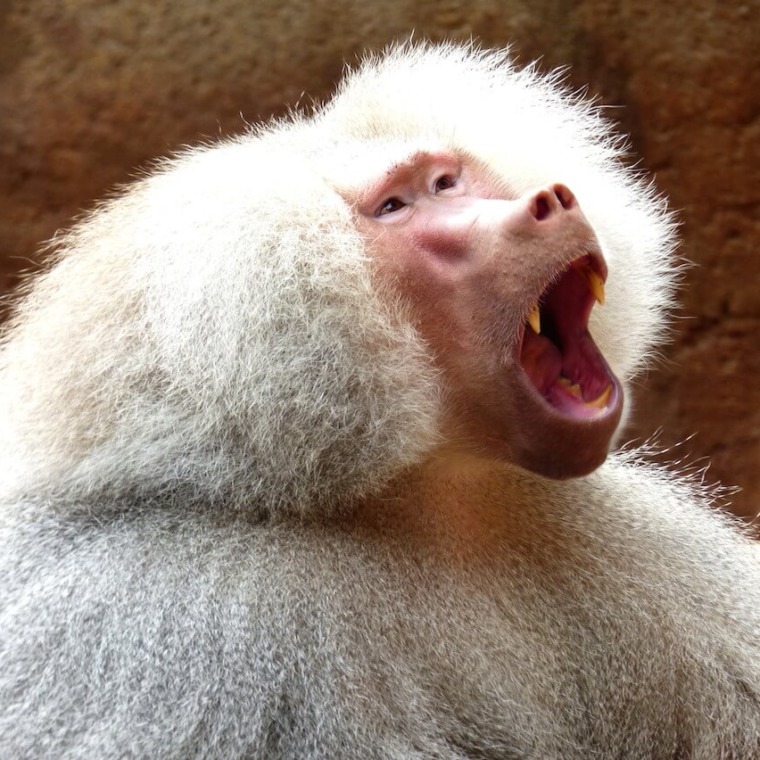
Sacred Baboons are common throughout northeastern Africa, but are extinct in the Nile region and Egypt, where they originally received their name and were worshiped by the ancient Egyptians.
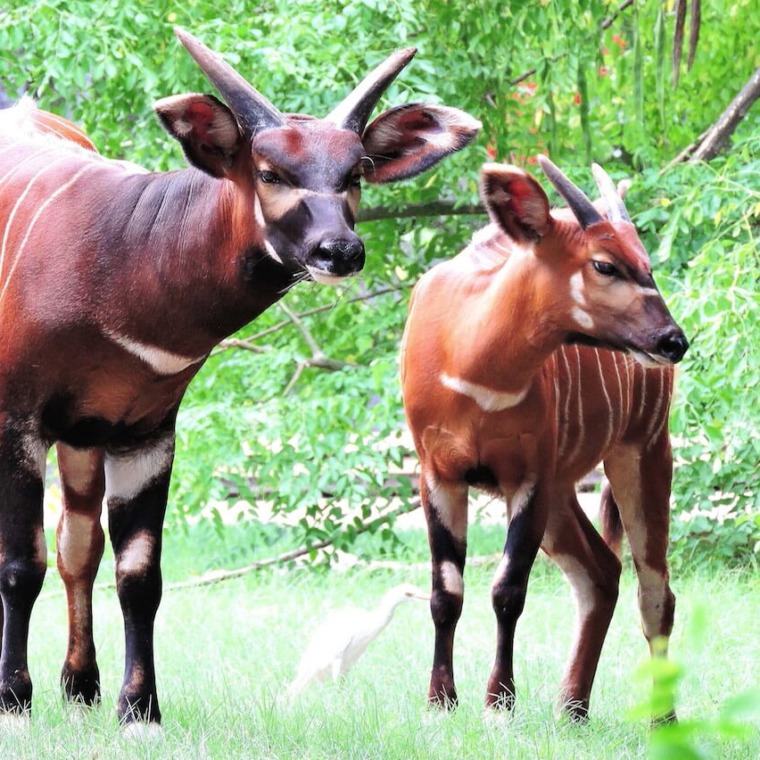
Bongo are most active at dawn and dusk, and often forage near the edges of wooded areas. They normally shy in the wild and flee into the forest for cover at the slightest provocation.
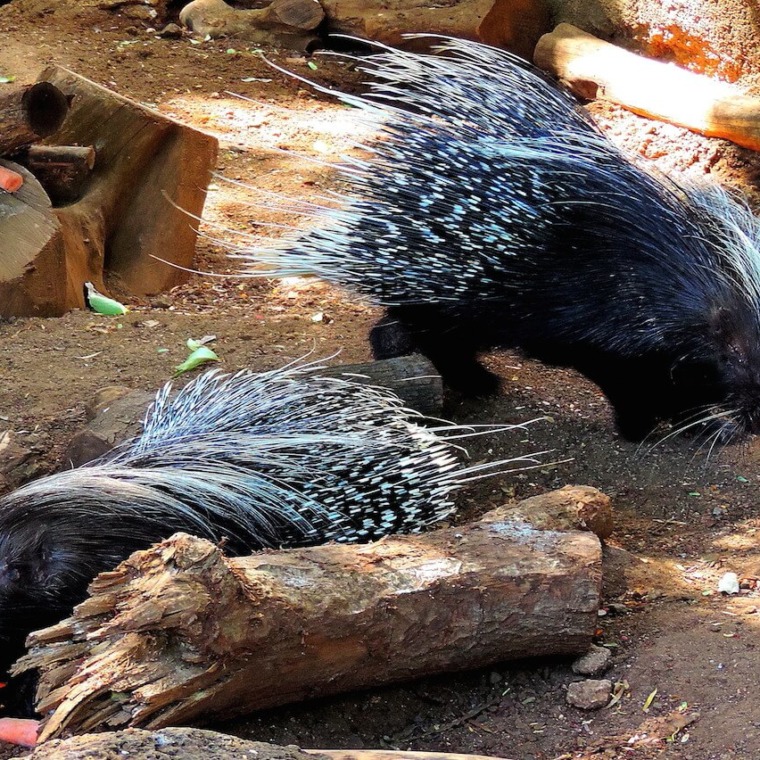
The North African crested porcupine is nocturnal. They are very adaptable and can be found in forests, on plantations, in rocky or mountainous areas as well as in deserts.
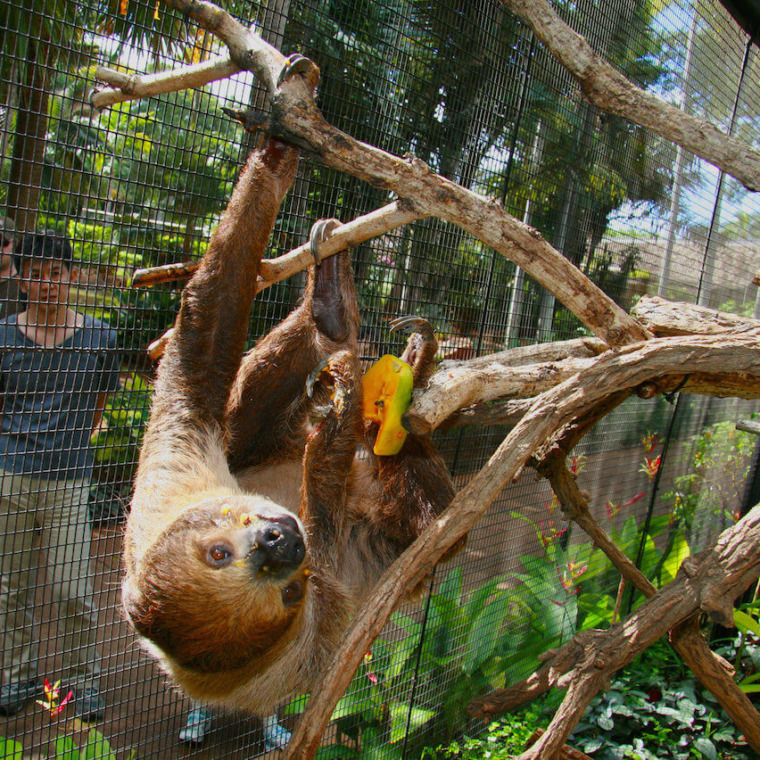
Sloths are found in Central and South America in the rain forest canopy. The Linne’s two-toed sloth is found in such countries as Nicaragua, Columbia, Venezuela, Surinam, Guyana, French Guiana, North Central Brazil, and Northern Peru.
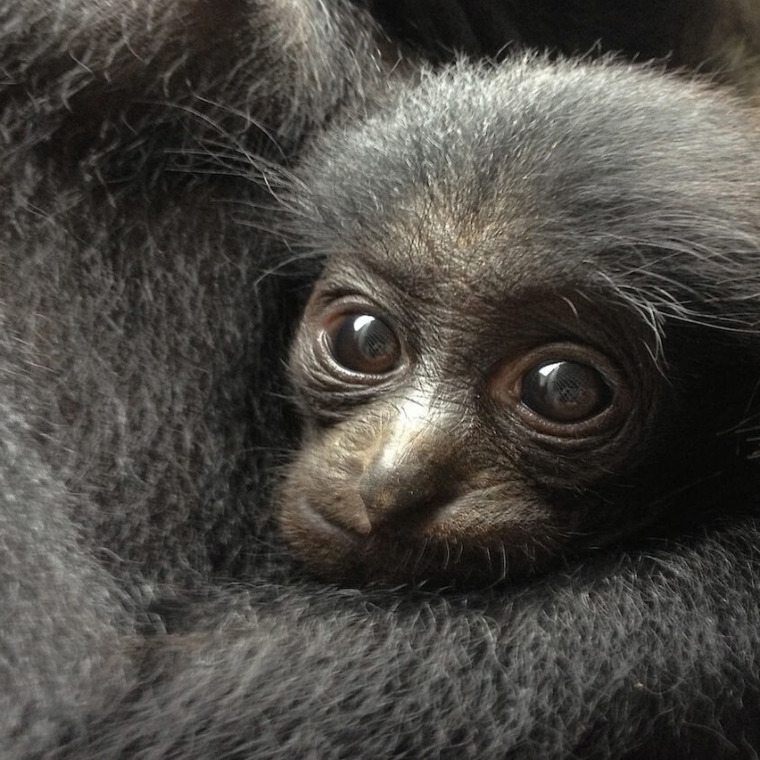
Siamangs range through southeastern Asia and are found in some numbers in the Malay Peninsula and Sumatra.


